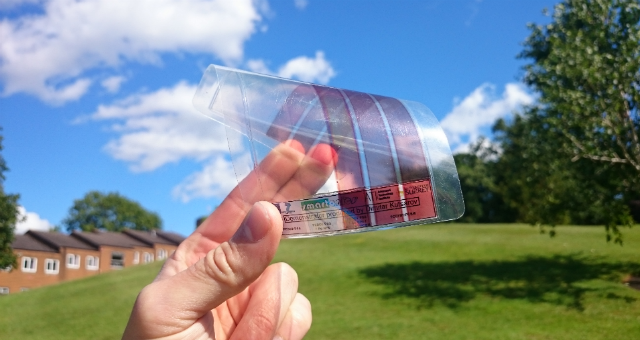Super-thin graphene sheets could be turned into 'smart wallpaper' capable of powering your home, scientists say
The scientists took inspiration from moths' eyes to increase the sheets' light absorbency

Your support helps us to tell the story
From reproductive rights to climate change to Big Tech, The Independent is on the ground when the story is developing. Whether it's investigating the financials of Elon Musk's pro-Trump PAC or producing our latest documentary, 'The A Word', which shines a light on the American women fighting for reproductive rights, we know how important it is to parse out the facts from the messaging.
At such a critical moment in US history, we need reporters on the ground. Your donation allows us to keep sending journalists to speak to both sides of the story.
The Independent is trusted by Americans across the entire political spectrum. And unlike many other quality news outlets, we choose not to lock Americans out of our reporting and analysis with paywalls. We believe quality journalism should be available to everyone, paid for by those who can afford it.
Your support makes all the difference.British scientists have created super-thin flexible graphene sheets, which they believe could be used to create 'smart wallpaper' capable of generating electricity from the smallest amounts of light and heat.
Researchers working at the University of Surrey's Advanced Technology institute (ATI) used a technique called nanotexturing to create the sheets, which involves growing graphene around a textured metallic surface.
The team took inspiration for the design of the sheets from the natural world, mimicking the unique structure of moths' eyes in the construction of the material.
Professor Ravi Silva, head of the ATI, explained: "Moths' eyes have microscopic patterning that allows them to see in the dimmest conditions. These work by channelling light towards the middle of the eye, with the added benefit of eliminating reflections, which would otherwise alert predators of their location."
Graphene is known for its high electrical conductivity and strength, but is traditionally inefficient at light absorption. Typically, a graphene sheet would only absorb around two to three per cent of the light that hits it.
However, by patterning graphene in a similar way to moths' eyes, they boosted its absorbency by 90 per cent, creating the most light-absorbent material for its weight that has ever been created.
The technology is still in the early stages, but the team have big ambitions for the future. They see these sheets being embedded in wallpaper and window panes, absorbing waste light and heat from inside and outside the home and converting it to electricity, which could then be used for a number of applications.
They also believe a number of 'Internet of Things' devices could be coated in these sheets, meaning they would not need to be constantly recharged or connected to the mains.
The next step for the team is to start incorporating their material in different existing technologies. They are currently looking for industry partners to help take their creation forward.
Join our commenting forum
Join thought-provoking conversations, follow other Independent readers and see their replies
Comments